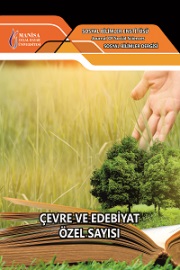İzmir-Çeşme Sahillerinin Doğal Radyoaktivitesi
Natural Radioactivity of the Coastline of Çeşme-İzmir
Author(s): Filitz Gür, Mehmet TarakçiSubject(s): Regional Geography, Health and medicine and law, Environmental interactions
Published by: Celal Bayar Üniversitesi Sosyal Bilimler Enstitüsü
Keywords: Natural radioactivity; beach sand; dose rate; coastline; Çeşme;
Summary/Abstract: Turkey has the largest beach sand system in Europe. The 845 km part of total coasts in 8333 km length (about 10% total coast) is covered by beach sands. Beach sands are mineral deposits, originated generally in the magmatic rocks. Therefore, the study of natural radioactivity in beach sands is important to assess the radiological risk due to external exposure to gamma radiation. In this study, the activity concentrations of natural radionuclides (226Ra, 232Th, 40K) of beach sand samples taken along the coastline of Çeşme district were measured by HPGe gamma spectrometry system and the dose rates exposed by people were calculated. The activity concentrations of 226Ra, 232Th, 40K in beach sand are found to lie in the range of 5.70 –38.83, 3.870–292.7, 120.4-377.6, dry weight, respectively. The absorbed gamma dose rate has been calculated to be in the range between 12 and 202 nGy/h. The annual effective dose equivalents are within 0.015-0.250 mSv. The radium equivalent values of beach sand samples are found lower than the world limit of 370 Bq/kg with the exception of a beach in the AlaçatıÇeşme. The obtained results show that the radioactivity and the dose rates of Çeşme coastlines do not pose any risk for population.
Journal: Celal Bayar Üniversitesi Sosyal Bilimler Dergisi
- Issue Year: 16/2018
- Issue No: Special
- Page Range: 167-186
- Page Count: 20
- Language: Turkish

